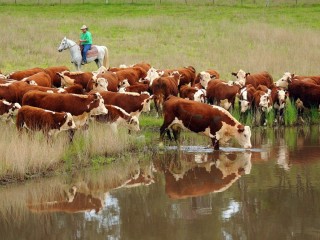 In what is traditionally one of the strongest times of year for cattle supply in southern Australia, buyers are being forced to dig deeper and search further than usual to secure required numbers.
In what is traditionally one of the strongest times of year for cattle supply in southern Australia, buyers are being forced to dig deeper and search further than usual to secure required numbers.
Feed-driven inquiry for young cattle is running high, and is likely to continue as the southern harvest rolls into gear and producers look for more cattle to graze on stubble as it becomes available.
However, finding the cattle to fill that demand is posing a significant challenge across the region, according to Elders National Livestock Manager Chris Howie.
“Normally your feedlot numbers are coming on relatively easily, but we’re having to work hard at getting numbers across the feedlots we’re involved with,” Mr Howie said.
Several reasons existed for the ongoing supply squeeze he said, with one being the large export orders that left southern ports with younger cattle earlier this year.
Mr Howie said Elders consigned a number of 200kg to 300kg weaners during the year that would normally be 300-350kg feeder cattle ready to go into feedlots now.
“We have just had a boat of 6000 Angus heifers go to Russia, and normally a percentage of those would go into the feedlot as well,” he said.
“So numbers that normally are just the core of supply have been taken out of the system by live export.”
Most producers had retained heifers this year to improve breeding numbers, while many were also taking advantage of available feed to boost returns by adding further weight to cattle before sale.
Instead of trading cattle out at 480kg, producers were looking to take the same cattle through to 550kg which could return around $1000-$1100 at current rates of $1.90 for heavy steers/light bullocks. This was posing a more attractive proposition for many than selling the same cattle into the feeder market.
Mr Howie said weight-for-age was a feature of stock coming forward in the south, with a lot of weight evident in cattle from south eastern South Australia and through southern parts of Victoria and into the Gippsland region.
Southern Australia appeared to be re-entering a traditional spring, he said, with paddocks starting to dry off during September and October and heat gradually rebuilding in recent weeks.
He predicted that the return of hot weather in northern NSW and southern and central Queensland would also start to cap the turnoff of cattle from those regions. “It is starting to get hot enough now that people think twice about mustering for sale,” he said.
The National Livestock Reporting Services’ Eastern Young Cattle Indicator rose by 2.25 points yesterday to 403.75c/kg, the highest figure since September 20.
